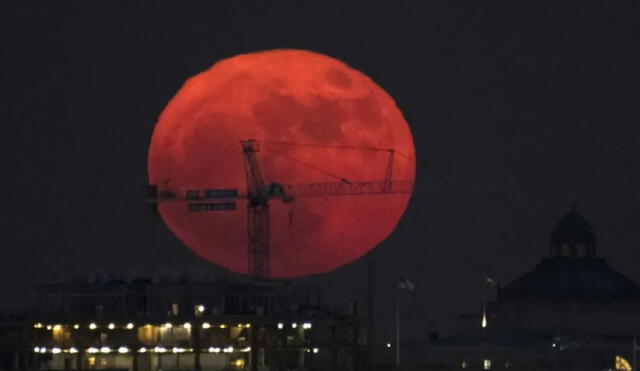Why does the Moon turn red? The science behind the Blood Moon on Thurday's lunar eclipse
A total lunar eclipse will flush the moon red across the Western Hemisphere. On Thursday night into Friday morning, the Earth will cast a shadow that totally blocks the moon.

Americans get ready for a breathtaking celestial event as the total lunar eclipse, famously known as the “Blood Moon,” graces the night sky on March 13-14. This rare phenomenon will transform the Moon into a mesmerizing red-orange orb, offering a stunning visual treat for stargazers across the Western Hemisphere.
Thousands of years ago, ancient civilizations like the Mayans and Mesopotamians feared the Blood Moon, believing it signaled a monstrous entity devouring the Moon. They would shout at the sky to “save” the Moon, convinced their efforts worked when it returned to normal. Today, we understand the science behind this phenomenon, but the awe remains. Here is the celestial event explained.
Why does the Moon turn red? Lunar eclipse explained
During a total lunar eclipse, the Sun, Earth, and Moon align perfectly, with the Moon passing through Earth's shadow. As sunlight filters through Earth's atmosphere, shorter wavelengths (blues and violets) scatter, while longer wavelengths (reds and oranges) bend around the planet and illuminate the Moon. This creates the iconic reddish hue, earning it the nickname “Blood Moon.” The intensity of the red color depends on atmospheric conditions—more dust or clouds mean a deeper red.
Rayleigh Scattering, named after British physicist Lord Rayleigh (John William Strutt), is the phenomenon that explains how different wavelengths of light interact with Earth's atmosphere. Shorter wavelengths, like blue and violet, scatter in all directions, which is why the sky appears blue. However, during sunrise and sunset, sunlight must pass through more of the atmosphere, causing shorter wavelengths to scatter completely while red and orange hues dominate. So, the lunar eclipse is like witnessing every sunrise and sunset on Earth simultaneously.
Viewing tips for the Blood Moon
According to NASA, the eclipse will begin its partial phase at 10:57 p.m. ET on March 13 and conclude by 5:00 a.m. ET on March 14. The highlight, known as “totality,” will occur between 1:26 a.m. ET and 2:31 a.m. ET, with the peak at 1:58 a.m. ET. This event will be visible across the states, so step outside and look up to witness this cosmic wonder.
- No special equipment needed: The eclipse is visible to the naked eye, but binoculars or a telescope can enhance the experience.
- Find a dark spot: Escape city lights for the best view.
- Look for planets: While watching the eclipse, glance toward the western sky to spot Jupiter and Mars.
- Constellation watch: The Moon will start in the constellation Leo and move into Virgo, with surrounding stars becoming more visible as the Moon dims.












